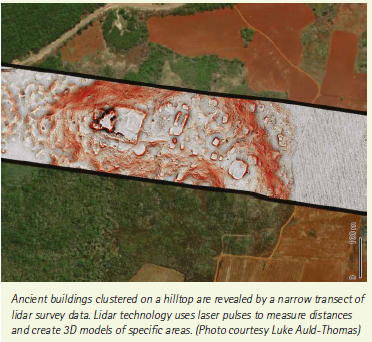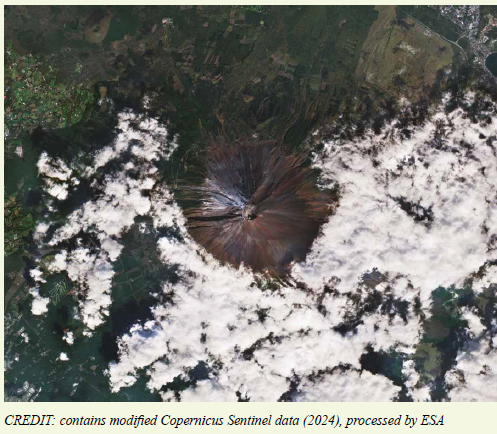| Imaging | |
Imaging
Russian rocket launches Iranian satellites
A Russian rocket blasted off successfully to carry a pair of Iranian satellites into orbit, a launch that reflected growing cooperation between Moscow and Tehran.
The Soyuz rocket lifted off as scheduled from Vostochny launchpad in far eastern Russia and put its payload into a designated orbit nine minutes after the launch. It was carrying two Russian Ionosphere-M Earth observation satellites and several dozen smaller satellites, including the two Iranian ones. Iran’s two satellites, named Kowsar and Hodhod, were the first launched on behalf of the country’s private sector. In 2022, a Russian rocket launched an Iranian Earth observation satellite called Khayyam that was built in Russia on Tehran’s order, and in February Russia put another Iranian satellite named Pars-1 into orbit. apnews.com
China launches new group of remote-sensing satellites
China successfully sent a new group of remote-sensing satellites into space from the Jiuquan Satellite Launch Center in northwest China on November 9, 2024.
The four satellites of PIESAT-2 were launched at 11:39 a.m. (Beijing Time) by a Long March-2C carrier rocket and entered its planned orbit successfully. They will mainly provide commercial remote-sensing data services.
Microsatellite Project to Monitor Objects in Space Over Canada, South Pole – Brantford Expositor
An exciting new satellite project to monitor and protect the Earth’s orbital environment is underway. University of Manitoba (UM) and Magellan Aerospace (Magellan), in collaboration with Canada’s Department of National Defence (DND) science and technology organization, Defence Research and Development Canada (DRDC), and the United Kingdom’s Defence Science and Technology Laboratory (Dstl), are working together to make it a reality.
Magellan and UM, both based in Winnipeg, Manitoba, are currently partnered on the DND-funded Redwing space domain awareness microsatellite project. Redwing is a research and development (R&D) microsatellite valued at $15.8 million, that is being designed, built, and operated in Canada. Redwing will monitor objects orbiting Earth to help reduce future risks to Canada’s space infrastructure from space debris or human-caused interference. Magellan is responsible for designing, building, and testing the Redwing spacecraft as well as for mission operations. Other Redwing mission partners include ABB Inc (main optical payload), C-CORE (operations support), as well as York University and UM (R&D support) In April 2024, Canada’s DND signed a contract option with Magellan for $900,000 to add a companion nanosatellite to the Redwing mission. The nanosatellite, known as Little Innovator in Space Situational Awareness (LISSA), will be integrated with the Redwing satellite and will be deployed from Redwing sometime after launch, once the two spacecraft have achieved an orbit at the designated altitude.
Leveraging the expertise provided by Ferguson and UM’s STARLab, Magellan is contracting the design and build of LISSA with UM. LISSA will follow in the same orbit as Redwing, operating some distance from it in a tandem in-track formation. In addition to performing its own observations, LISSA will serve as a convenient nearby object with which to exercise Redwing’s own monitoring and imaging capabilities.
LISSA will focus on observing satellites as they pass over the Earth’s South Pole, a region that is not well-covered by ground-based space surveillance sensors. Reflected light from ice and clouds during the Antarctic summer presents a significant technical challenge when imaging other space objects in visible light. For this reason, the UK’s Dstl is providing a short-wave infrared camera to be hosted on the LISSA nanosatellite, which will be less impacted by light scattered from the ice sheet. Also, many satellite materials are more reflective in the short-wave infrared increasing the likelihood of detecting them.
Both Redwing and LISSA are expected to launch in 2027. Both satellites will be operated by Magellan with support from UM’s STARLab, communicating through ground antenna stations owned by C-CORE in Inuvik, Northwest Territories and Happy Valley-Goose Bay, Newfoundland and Labrador. Mission data will be analyzed by DRDC and Dstl. https://nationtalk.ca














 (No Ratings Yet)
(No Ratings Yet)





Leave your response!